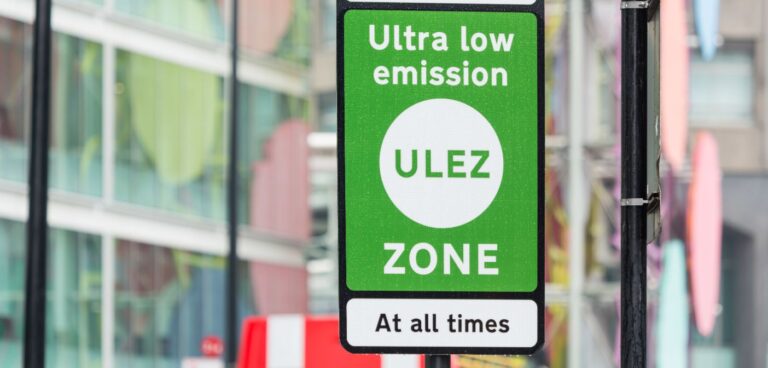London’s expanded Ultra Low Emission Zone (ULEZ) went live on Monday 25 October 2021. But what is it, how does it work and who’s being affected? Here’s explains everything you need to know about the new scheme…
What is the ULEZ?
Implemented in April 2019, the Ultra Low Emission Zone (ULEZ) operates 24 hours a day, 7 days a week, every day of the year (except Christmas Day). Via a network of 650 cameras, it initially covered the same eight sq-mile area as the Congestion Charge zone and reportedly contributed to a 44% reduction in roadside nitrogen dioxide (NO2) within its original boundaries.
Where has the ULEZ expanded to?
On 25 October 2021, the ULEZ expanded from central London to create a single larger zone up to the North Circular Road (A406) and South Circular Road (A205). The North and South Circular roads themselves are not included in the zone. The new scheme is 18 times the size of the original central area and now covers 3.8 million people. Measuring 380km2, it covers one quarter of London and is the largest zone of its kind in Europe.
Who’s affected?
Transport for London (TfL) estimates that as many as 100,000 cars, 35,000 vans and 3,000 lorries could potentially be affected by the tighter standards in the expanded area every day. According to TfL, more than 80% of vehicles are now compliant, up from 39% in February 2017 when the plans for the larger area were first announced.
What are the charges?
Drivers of non-compliant vehicles must pay a single daily charge to drive within the zone: £12.50 for most vehicle types or £100 for heavier vehicles, including lorries over 3.5 tonnes. Owners of non-UK registered vehicles must also pay the ULEZ charge to drive within the zone if they do not meet the emissions standards. Automatic number plate recognition cameras are already set up to enforce the wider zone.
The penalty for failing to pay is £160 for cars, vans and motorbikes (reduced to £80 if paid within 14 days of receiving the notice) and £1,000 for lorries and coaches.
What emissions standards do vehicles need to comply with?
- Euro 3 (NOx) for motorcycles, mopeds, motorised tricycles and quadricycles
- Euro 4 (NOx) for petrol cars, vans and other specialist vehicles (up to and including 3.5 tonnes gross vehicle weight) and minibuses (up to and including 5 tonnes)
- Euro 6 (NOx and PM) for diesel cars, vans and other specialist vehicles (up to and including 3.5 tonnes) and minibuses (up to and including 5 tonnes)
- Euro 6 (NOx and PM) for lorries, vans or specialist heavy vehicles over 3.5 tonnes gross vehicle weight, or buses/minibuses or coaches weighing over 5 tonnes gross vehicle weight
Essentially, any petrol vehicle built after 2006 and any diesel vehicle built after 2016 should be compliant.
How can I check if my vehicle complies with the ULEZ?
Drivers can check if their vehicle meets the emission standards in the expanded ULEZ by using TfL’s online vehicle tool.
Are any discounts or exemptions available?
A number of grace periods are available to help disabled Londoners prepare for the scheme:
- Drivers of vehicles registered under the disabled tax class or disabled passenger tax class will not have to pay the ULEZ charge until 27 October 2025
- Wheelchair adapted private hire vehicles (“mini cabs”) will not have to pay the ULEZ charge until 27 October 2025
- Not-for-profit community transport minibuses will not have to pay the ULEZ charge until 30 October 2023 in recognition of their role in transporting older and disabled Londoners
Why has the ULEZ expanded?
According to TfL, air pollution in London contributes to thousands of deaths each year and is linked to heart disease and dementia as well as stunting the development of children’s lungs. The larger ULEZ is predicted to result in harmful NO2 being reduced by around 30% across the whole city.
Alex Williams, TfL’s director of city planning, said: “The benefits of the larger ULEZ won’t just be felt from day one of its operation. Compliance with the tough standards has more than doubled since the mayor announced the plans, with the result being Londoners breathing cleaner air over the last four years.
“We don’t want drivers to get caught out, so we are advising people to use our checker to see if their vehicle meets the standards. If they are liable for the charge we would ask them to consider using public transport, or to walk or cycle if possible, and if they need to drive, consider using a car club whose fleets are fully ULEZ compliant, or switching to the cleanest vehicle.”
Where do ULEZ earnings go?
TfL claims that any money received from the ULEZ will be reinvested into improving London’s transport network – including its cycleways, buses and tube – and helping to improve London’s air quality. However, think tank Centre for London has claimed that the money will be used by TfL to pay back the cost of the infrastructure developed for the expanded zone, which comprises a network of around 750 additional cameras installed on top of the existing 650.





